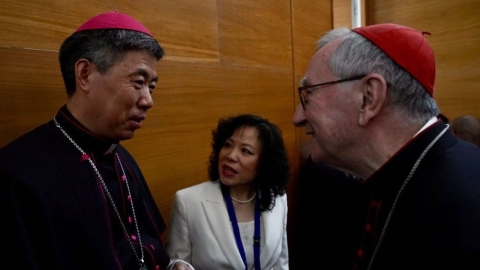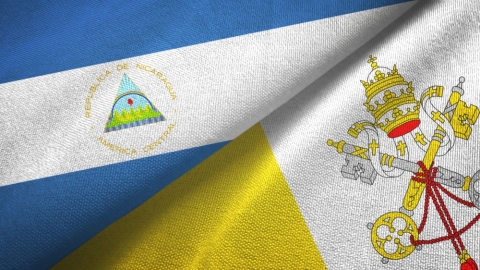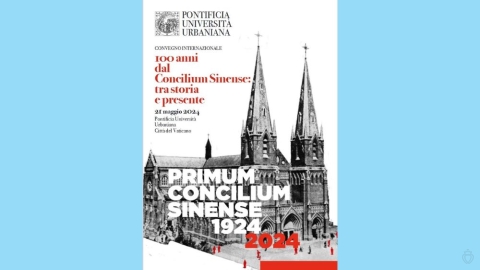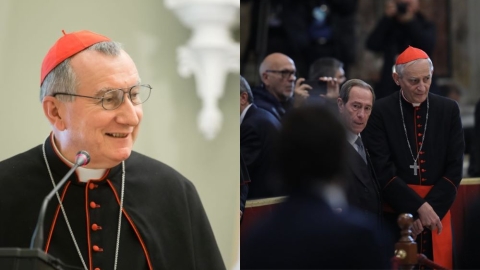Bishop Huonder’s Testimony: The Great Wound (2)

Below is a transcript of the episode two of the three videos of Bishop Vitus Huonder's testimony broadcast on the Certamen YouTube channel.
5. The Novus Ordo Missae
The Society of Saint Pius X (SSPX) is in a certain sense a child of the crisis in the Church. We have already observed that. The crisis of the Church is a consequence of a partial apostasy from the transmitted Faith, tradition and practice of the Faith. The departure from tradition is felt most painfully in the changed rite of the holy sacrifice of the Mass. Was this change a legitimate move? Was that the intention of the Council?
Concerning the Holy Mass, the Constitution on the Liturgy, Sacrosanctum Concilium says: “At the Last Supper, on the night when our Savior was betrayed, He instituted the eucharistic sacrifice of His Body and Blood. He did this in order to perpetuate the sacrifice of the Cross throughout the centuries until He should come again, and so to entrust to His beloved spouse, the Church, a memorial of His death and resurrection: a sacrament of love, a sign of unity, a bond of charity, a paschal banquet in which Christ is eaten, the mind is filled with grace, and a pledge of future glory is given to us.” On the other hand, the Constitution warns against innovations: “Finally, there must be no innovations unless the good of the Church genuinely and certainly requires them; and care must be taken that any new forms adopted should in some way grow organically from forms already existing.” Nevertheless, a greatly changed new rite is presented with an equally changed theology of Holy Mass.
As already indicated, the departure from the traditional Eucharistic Faith became clear in 1969 with the Apostolic Constitution Missale Romanum ex decreto Concilii ecumenici Vaticani II instauratum and with the introduction of the Novus Ordo Missae. During the review of the new regulations of the Mass in the same year, a commission of experts came to the following conclusion: “It is evident that the Novus Ordo has no intention of presenting the Faith as taught by the Council of Trent, to which, nonetheless, the Catholic conscience is bound forever. With the promulgation of the Novus Ordo, the loyal Catholic is thus faced with a most tragic alternative.” The Commission was not really taken seriously. A correction in the introduced Missal should remedy this difficulty. In reality, the Ordo itself remained conceived as it was, namely no longer fully exemplifying the Faith of Trent. A long time later, this finally became evident in the Apostolic Exhortation Desiderio Desideravi (2022). One has to look away to not identify a predominantly Protestant conception of the Holy Mass – despite some seemingly Catholic terms, pious attitudes, and interpretations of the celebration. The papal letter refers to the Council. It is thus understood as an interpretation of the Constitution of the Council. A comparison hardly stands up to that.
6. The Authentic Roman Liturgy
The liturgy of the church handed down until Vatican II is essentially the authentic Roman liturgy. This is a historical fact. You can't deny this, you can only ignore it.
This traditional liturgy is sometimes also called the Tridentine Mass, which is not quite correct. Pope Pius V introduced no new “Tridentine” rite. He handed over to the church a purified traditional text of the holy sacrifice of the Mass. In Quo primum of July 14, 1570, he states, among other things, with regard to the celebration of the Holy Mass: “We likewise declare and ordain that no one whosoever is forced or coerced to alter this Missal, and that this present document cannot be revoked or modified, but remain always valid.” A successor pope must not ignore such a provision. He must not do this, both because of the age of the liturgical text and because of the subject itself. Because this instruction does not simply concern the changeable discipline, but a deposit of Faith, we could say, a truth of Faith in the form of prayer. The traditional Roman liturgy is equivalent to a creed. Its substance must not be changed. Thus it cannot be banned. Pope Pius V didn't create anything new. Rather, he affirms the legitimacy of the exercise of Faith in this form of liturgy. He confirms the authenticity of this Faith. The faithful can never be deprived of such a good. What happened after the Second Vatican Council with the intended abolition of the traditional rite of the Mass is an injustice, an overstepping of authority.
7. Means of Pressure
For the development of church life after the Second Vatican Council – and thus for the crisis – two concepts were decisive: obedience and the living Magisterium.
They can be summed up in one sentence: Absolute obedience is to be given to the living Magisterium. A certain interpretation of these two concepts has favored the negative development of ecclesiastical life in recent years. Because these two terms were used as a means of pressure for the acceptance of the innovations. In earlier times, the faithful were not sufficiently introduced to the scope of obedience. They were given too little instruction in the importance of the Magisterium and tradition. Too often obedience had been understood in servile and submissive terms, as cadaveric obedience.
Attacks on the Church and an overly narrow view of papal authority, especially since the 18th and 19th centuries, had the effect that only absolute, unquestioning obedience was known. This obedience was inculcated in the faithful. So they bowed without objection to what was presented as the supposedly necessary renewal of the church. Archbishop Lefebvre emphasized in an audience with Pope Paul VI. on September 1, 1976:
“I would like to get on my knees and accept everything, but I can't go against my conscience.” This attitude would have been unthinkable for many faithful back then. One didn't dare to do so in front of the ecclesiastical authorities. The appeal to conscience was taught too little. However, the course of this audience is very revealing for how authority was used then and how it is still used today! Abuse of authority (terrorizing of faithful) can never be ruled out. Every Catholic must always remain aware of this.
The other term, the living Magisterium, was and is often misused to bring forward new teachings that are not anchored in tradition. However, papal authority, like every ecclesiastical authority, is bound by the rule of Faith. In this sense, ecclesiastical authority does not determine what is to be believed. It takes over the deposit of Faith, guards it, protects it and expounds it. This is what is meant by the living Magisterium. The Magisterium cannot make an arbitrary change of Faith and oblige acceptance.
Here, in the rule of Faith that has been handed down, we find the standard for correctly judging the attitude and work of Archbishop Lefebvre. He has done nothing other than what is the duty of a bishop, indeed of all the faithful: to examine the teachings and actions of the Church's authority against the background of the rule of Faith.
8. Absence of Pietas
The Codex Juris Canonici (CIC) is not a textbook on dogmatics or morals. But it is a protection for the doctrine of Faith, for the life of Faith. It is primarily intended for the salvation of the souls of the faithful.
We already read in the 1917 Code, in the collection of canon law, which was in force at the time of the Second Vatican Council, in Canon 23: “In case of doubt, the revocation of preexisting law is not presumed, but later laws are to be related to earlier ones and, insofar as it is possible, harmonized with them.” This principle was also included in the 1983 Code of Canon Law in Canon 21. If such a principle applies to human jurisprudence, to positive ecclesiastical law, then it must be applied all the more to the proclamation of doctrine and to the regulation of liturgical life – for the protection of divine law. For the salvation of the souls of the faithful is directly affected by it.
Everything that has happened in the Church since the Council in terms of innovations and changes must be judged on the basis of this principle. How far is it consistent with the teaching of the past? There is also a pietas in this regard, a devotion and esteem, a respect for the Fathers, for the past of the Church, for traditional teaching and practice. There is no choice in matters of Faith. The later has to be in harmony with the earlier. The profession of faith must be consistent with the gospel and other revelations. Council decisions must be in accordance with the profession of faith. Subsequent council decisions must be consistent with earlier binding council decisions. It was precisely this pietas that was largely absent during the time of the Council and during the period after the Council. How did they treat the faith of the Church back then, the churches and church furnishings, the sacred vestments, people attached to tradition, priests who, for reasons of conscience, wanted to remain faithful to the traditional liturgy! This still weighs heavily on the Church today! How arrogant have the theologians become in their teachings and in their delusion to return to the origins of the Church. The catchphrase was: “Now everything is getting better with the Church. We are the generation that makes a difference for the better.” That was the sort of mood in wide circles, a mood that led to looking down on the past with contempt, sarcasm, and smugness, without being afraid to disregard even the sacred and untouchable.
Since the pontificate of Paul VI, again and again we have recorded serious violations in the doctrine and discipline of the church, which lack pietas. Undoubtedly the most serious one was the violation of the liturgy of the Holy Mass. The holiest part of our Faith was treated without pietas, without respect. Yet the Church has always preserved and passed on sacred texts and liturgical instructions with the utmost care. She only made changes or additions with great reluctance and reverence. The principle that was formulated by the First Vatican Council with regard to the powers of the pope, but which applies to every church office, and in particular applies to the Holy Sacrifice of the Mass: “The Holy Ghost was not promised to the successors of Peter in order that, by His revelation, they might manifest a new doctrine, but that, with His assistance, they might preserve and faithfully expound the revelation transmitted by the Apostles, that is, the deposit of faith.” After everything that has happened, one can ask oneself: Was what happened a credible course of action? Was it determined by pietas?
Related links
(Source : Certamen/FSSPX.Actualités – FSSPX.Actualités)





